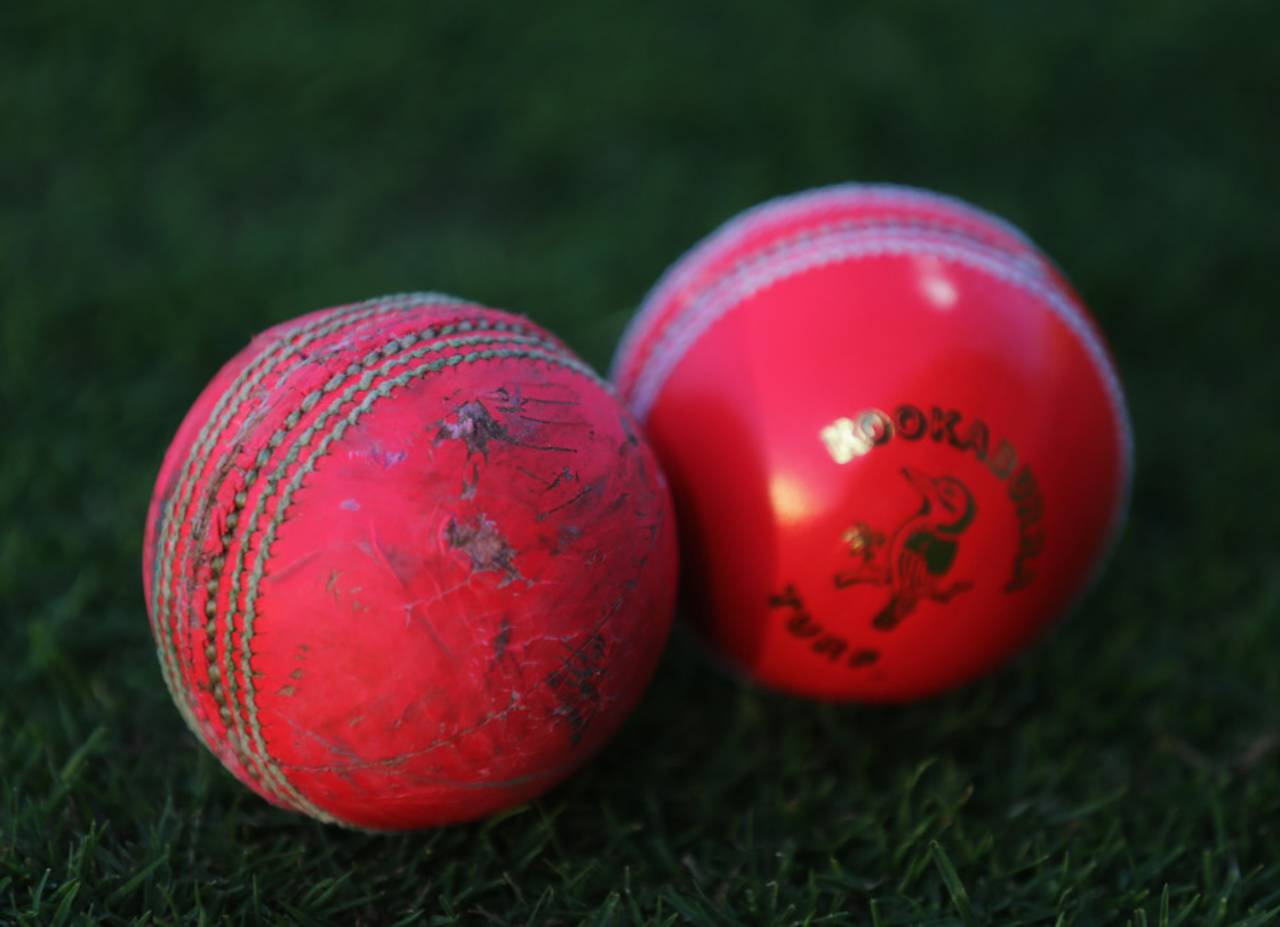Retaining home advantage with pink ball a challenge for BCCI
The pink ball's debut in India has reiterated that retaining the Test team's home advantage will be as much of a challenge to the BCCI as countering dew in the innings
Sidharth Monga
19-Jun-2016

Bhowanipore seamer Geet Puri said the Kookaburra pink ball offered better control but warned that getting reverse swing could be difficult • Getty Images
The BCCI has made clear its intention to embrace day-night Tests but the pink ball's debut, in a club final at Eden Gardens, has reiterated what was feared: retaining India's home advantage will be as big a challenge for the BCCI as countering dew in the evenings.
In the CAB Super League final, played in the backyard of the BCCI's technical committee head Sourav Ganguly, Mohun Bagan were bowled out for 286 by Bhowanipore at the stroke of stumps on the first day of pink-ball cricket in India. As with day-night Test cricket's debut, the match was played on an excessively green pitch and the square around it was also lush. In order to maintain the visibility of the pink ball, the odds have been stacked in favour of seamers as things stand now. The ball swung and seamed appreciably throughout the day; there was no dew because of the overcast weather in the monsoon.
India's Test wicketkeeper Wriddhiman Saha, who added 81 for the fifth wicket with Bengal opener Anustup Majumdar to help Mohun Bagan reach some respectability after an early collapse, said it wasn't quite the extent of movement but the persistence thereof that was a concern.
"We took our stance some yards outside the crease in order to counter the swing," Saha was quoted as saying by the Telegraph. "The ball continued to swing even during the latter stages, which doesn't happen with a red ball. If you apply yourself against the pink ball and on this kind of a green wicket, you will surely get runs. That's what Anustup did. I too could've got more if not for that false stroke."
Majumdar, who scored 83, said picking the ball was not an issue. "The ball came nicely on to the bat," he said. "Visibility was not a problem as the ball is a bit glossy. It was skidding and seaming. Initially it was a bit difficult, but once you're set, shot-making became easy. You need to apply yourself."
The green surroundings kept their end of the bargain. "I was surprised to see the hardness of the ball even after 57 overs," umpire Premdip Chatterjee was quoted as saying by the Indian Express. "And unlike the white Kookaburra, the seam was still standing up."
Bhowanipore seamer Geet Puri made use of that proud seam. "There was a lot of swing," Puri told Hindustan Times. "The ball felt much lighter. I really enjoyed bowling with the pink Kookaburra. It had much better control." There was a warning, though. "Unlike in the red cherry, we can't keep the shine on one side with the pink ball," Puri said. "I don't think it will reverse."
If India are to play a day-night Test this year, it will most likely be with a Kookaburra ball in similarly doctored conditions to make sure the ball lasts. Any of India's three big opponents this coming season - New Zealand, England and Australia - will lap up such an offer. Neither is Kookaburra India's preferred ball - they have even contacted Dukes to see if it can manufacture the pink ball - nor are these conditions going to help the home side. Spin and reverse swing could suffer because of the doctored conditions.
Of course this is just the first attempt. The ball will only get better, and it is possible that the administrators might find out they don't need so much grass and move towards a more even playing field. The Test players haven't yet made their views public. They are likely to get a first-hand experience of playing with it in the Duleep Trophy before the home Tests begin. The BCCI is reputed to not go against its players, which makes for interesting following as to how the players react to the pink ball, and how the BCCI reacts to that reaction.
Sidharth Monga is an assistant editor at ESPNcricinfo